- Rent, Lease, or Purchase
- |
December 16, 2021
Shipping Container Doors
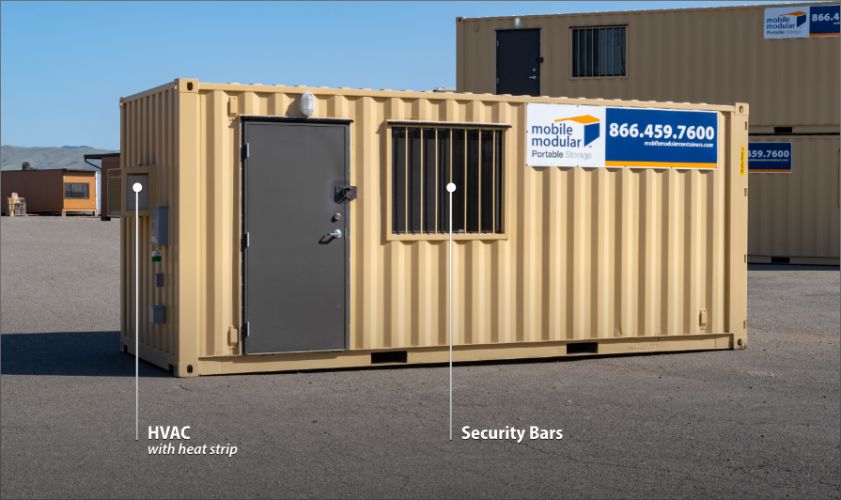
Because shipping container doors are an integral part of the container structure, selecting the right door not only helps keep your contents safe but also makes storage containers more accessible and easier to use.
Choosing the right doors is also an important consideration during the design process.
If you're using a shipping container with pre-built doors, knowing the door architecture can help troubleshoot any issues that may hamper the container's accessibility.
Let's look at the design, construction, and types of doors that will give you maximum flexibility for your desired application.
Elements of Shipping Container Doors
For every storage container door there are five essential components:
1. Door Body
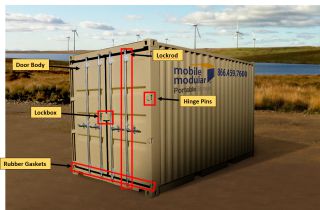
The body of a cargo door features two vertical hollow leaves, two horizontal C-sections, and a frame consisting of infilled, corrugated steel paneling.
Four drop-forged steel hinges help hold the body at the rear corners of the container. The hinges, also known as blades, allow the door to swing 270 degrees against the container wall.
2. Lockbox
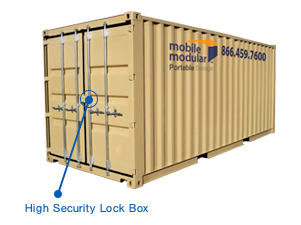
A lockbox is a protective steel box welded directly onto the door that houses a padlock. It protects the items inside the container from theft, tampering, and break-ins.
3. Lock Rod and Handle
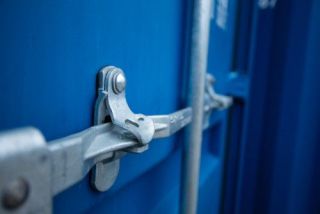
Each door has two to four vertical lock rods that enable opening, closing, and locking. The lock rod has a welded cam-and-knuckle mechanism, known as the cam keeper. Whenever you open the door, the handle rotates and forces the cam out of the keeper.
4. Rubber Gaskets
Rubber gaskets close the gap between the door body and the edges of the container. This seal helps prevent water ingress and leakage, keeping contents safe from damage.
5. Hinge Pins
Door hinges act as pivot points on the door, allowing free rotational movement.
Some containers may also have additional utilities, such as a security swing arm and shackle-puck locks.
How to Fit Cargo Doors on Shipping Containers
With the proper equipment, fitting cargo doors can be a DIY process.
Due to the weight of the doors, you’ll most likely need a forklift or hoist mechanism in order to lift them.
Otherwise, it’s best to hire a professional. Before you start, you’ll also want to ensure that you have the following tools:
- Tape measure
- Angle grinder
- 50mm x 50mm steel tubing
- Door clams
- Welding equipment
- Silicon
- Hinge plates
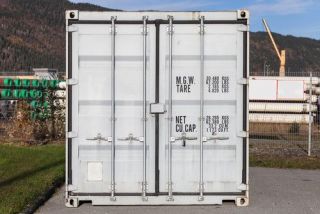
To fit your cargo doors, follow these basic steps:
- Decide whether you want a pre-built or a custom door
- Measure and mark the area on the container for the door and the steel tubing
- Use the angle grinder to cut the door opening
- Allow the steel to cool
- Remove any sharp edges using the angle grinder
- Use the steel tubing to make a door frame equal to the door size
- Secure the tubing with clamps
- Weld the tubing to the corners of the opening
- Ensure that the frame is square and level
- Prepare a smooth finish by applying silicon between the container shell and door frame
- Weld the hinge plates on the side frame and install the door
However, if you are renting a shipping container unit, you cannot make any modifications or customizations to the doors.
Want to know more about door customizations or find shipping containers for sale? Contact us at 866.459.7600 or request a quote today.
What Is the Correct Way to Open and Close Container Doors?
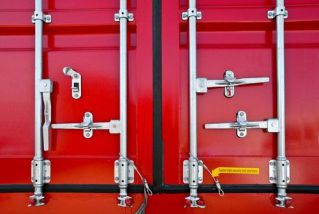
Opening a cargo container may seem tricky, especially if you’re unsure of the door mechanics. Over time, the doors may become sticky or harder to open, potentially requiring additional opening tools or equipment. However, these simple steps will ease the process:
- Rotate and lift all the latches on one side of the door. This frees the handle for rotation.
- Next, rotate and lift the handles upward. You may have to push in first to release the handle.
- Hold the handles firmly and pull them toward you, perpendicular to the door's direction. Once the handles lay parallel to each other, the door will open.
- Repeat steps these steps for the other side.
To close a container door you must:
- Firmly press both handles toward the container.
- Ensure that you lock the hooks at the top and bottom of the rod into the brackets.
- Tightly secure both handles simultaneously, so that they are parallel to the container door.
- Rotate the latches above each handle back to their original position.
- For additional security, use a padlock to secure your container.
Shipping Container Door Options
Depending upon your needs, you can use the following standard door types:
Cargo Doors
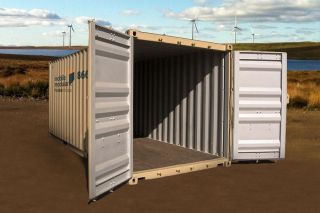
Cargo doors are heavy-duty free-swinging doors located at one end of the container. They are ideal for the portable storage of tools, machinery, and valuable items, however, they can be challenging to access in constrained spaces.
Personnel Doors
For portable offices, workspaces, and living areas, personnel doors are a necessity for convenience. If your services require frequent container access, these doors are the best solution for your company.
Roll-Up Doors

Roll-up doors, or shutter doors, lift from the bottom and curl up inside the container. These doors are a must if you lack adequate space around the storage unit.
Sliding Glass Doors

Glass doors are an aesthetic option for container cafes, shops, and exhibition areas. These stylish doors are transparent, enabling maximum light into the unit. However, they might not be as secure as the options mentioned above.
Combination Doors
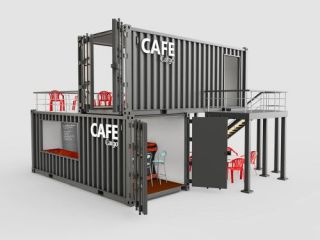
For large office-storage combo containers, it’s possible to have multiple doors for easy access and to accommodate your business needs.
Troubleshooting: When Shipping Container Doors Don't Operate As Expected
Sticky doors? Here are some possible reasons why container doors might stick:
- Improper gear alignment may put the frame in a racked position
- Warped lock rods due to cargo movement during transit
- Corrosion at the hinge pins and blade, leading to seizing
- Damage or hardening of the door gasket due to frequent use or cold weather
- Water entrapment between the doors
- Construction quality issues
Use the following standard remedies if your door doesn't open or close properly:
- Lubricate the locking bar brackets, hinges, and bar guides with an industrial lubricant
- Apply a generous amount of grease onto the locking bar cams
- Check and replace the door hinges, handles, and brackets if you see significant corrosion or damage
Conclusion
The security, accessibility, and aesthetics of shipping containers all depend on the door you choose. With the right door for your container, you’ll see maximum benefits. And with so many options to choose from, first, determine your needs to narrow down which will best suit your business requirements.
Mobile Modular Portable Storage is a leading supplier of shipping containers. We offer portable storage, office, and combo containers with cargo, personnel, and high-security door options.
Frequently Asked Questions
How do you cut a window and door in a shipping container?
You can cut open the space for a window or door in a shipping container by following these steps:
- Measure and mark the area for the door or window and steel frame on the container.
- Use the angle grinder to cut the door or window opening.
- Allow the steel to cool.
- If there are any sharp edges, remove them using the angle grinder.
- Use rectangular steel tubes to make a frame equal to the door or window size.
How do you install a window in a shipping container?
To install a window in a container, after measuring, cut the space required for your window and its frame. Once you make the cut, use tack welding first to secure the frame, then weld the entire window on the frame.
Watch this video to learn more about building container window openings.
How do you put doors in a shipping container?
You can install doors in a container by cutting out the required portion and securing the door on a steel-tube frame by welding. For a more detailed explanation, check out this video.
Can you drill into a shipping container?
Yes, you can drill into a shipping cargo container. However, ensure that you use adequate lubrication and proper tools to avoid damage to the container walls and prevent heat buildup.
Related Blogs
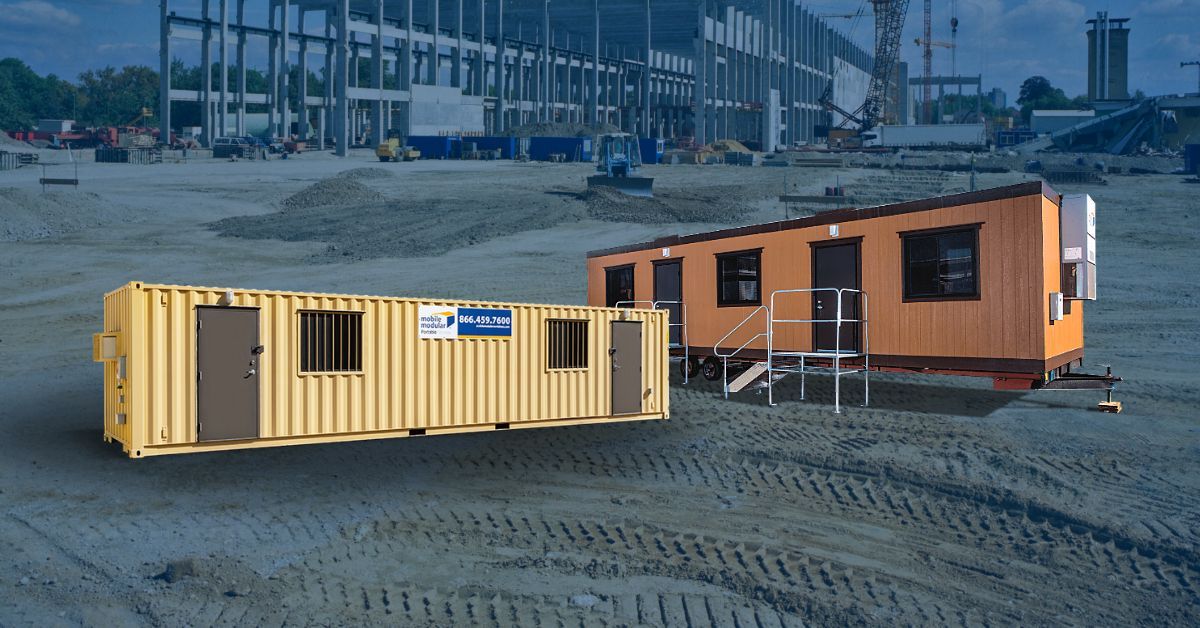
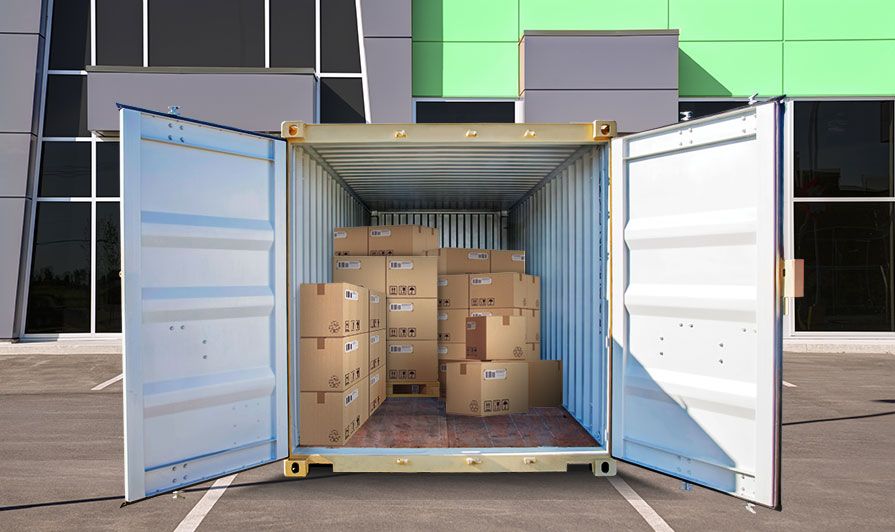

Subscribe to Our Blog
Enter your email address to subscribe to the blog and receive the notification of new posts by email.
Thank You for Subscribing to Our Blog!
Stay tuned for upcoming emails with valuable content that we hope will enhance your experience with our brand.
Both Pardot and mg360 form submissions failed.
